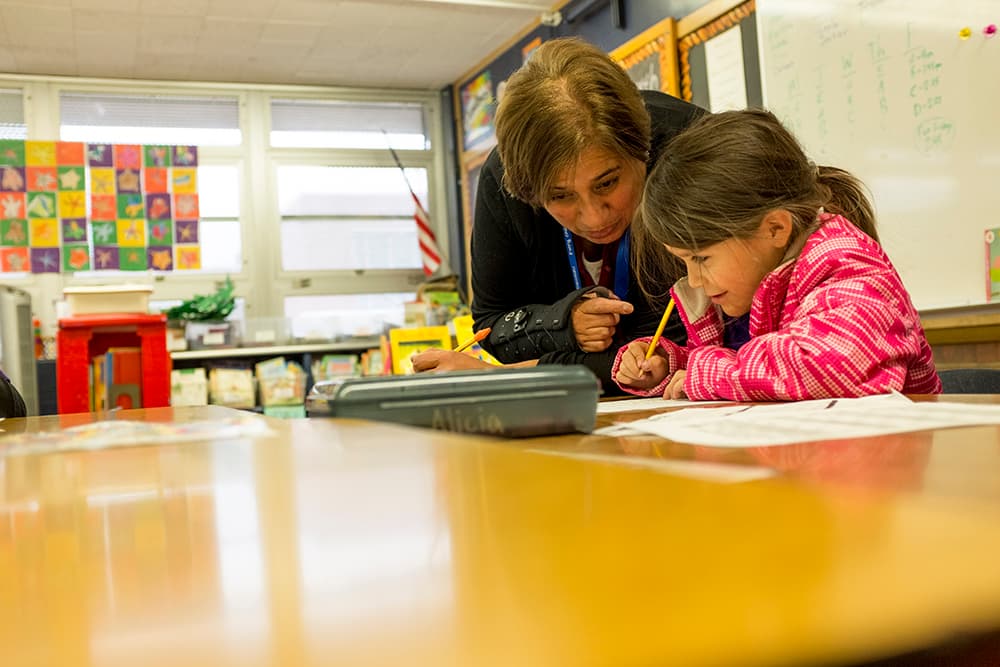The Denver school district is known nationally for ambitious reform efforts aimed at boosting its lowest-performing schools. But the results have been mixed, with some of the most disruptive strategies producing only modest improvements, according to a new report.
The report, called "Denver's Next Journey: School Improvement," comes from the organization A Plus Colorado, which has supported many of Denver Public Schools' reforms but has also criticized the district when it hasn't executed them well.
The report takes a close look at three strategies in particular. The first provides extra funding and guidance to struggling district-run schools, an intervention the district calls the "tiered support framework."
Most Denver schools receiving the highest "tier" of extra support showed improvement on the district's school rating scale, the report finds. The ratings are based largely on student test scores and are controversial in their own right. (More on that here.)
The second strategy is called "year zero redesign." It involves hiring a new principal and giving that leader a year to redesign a school, all the while keeping the school open and operating under the management of an interim principal.
The sample size is small, but the report found that the four schools where the strategy was deployed in 2015 showed improvement, although two backslid in 2018.
The third strategy is "turnaround," which means closing schools with persistently low student test scores and replacing them with schools the district thinks could do a better job. The report pays special attention to Denver Public Schools' most high profile effort, involving Montbello High School and several other schools in the far northeast part of the city.
The far northeast turnaround has produced only modest results. Whereas none of the schools involved were highly rated in 2010, two schools -- Oakland Elementary and DCIS at Ford (formerly Ford Elementary) -- were highly rated in 2018. The rest, including the three new schools that replaced Montbello High, were not.
Looking at the entire far northeast region, including schools that weren't explicitly part of the turnaround, the improvement is greater, the report concludes. In 2010, only 24 percent of students there were attending highly rated schools. In 2018, 42 percent were attending highly rated schools. Some of those schools are part of charter school networks.
"Students in the region have relatively better access to high-quality seats than students did before the region-wide turnaround," the report says. "However, this falls short of the promises that many families were offered at the start of the turnaround."
Improving low-performing schools is difficult, and districts across the country have struggled to find effective ways to do it. What's more, such efforts can have unintended and long-reverberating effects that go far beyond academic outcomes.
The report also notes that while some communities have been "empowered to create the schools they want for their students," including by participating in deciding which new schools should replace struggling ones, many other communities "have been fragmented."
Communities of color have been disproportionately affected. A Plus Colorado calculates that in the schools impacted by major turnaround work over the past decade, 93 percent of students identified as students of color and 88 percent qualified for subsidized meals.
Read the full report below.
Chalkbeat is a nonprofit news site covering educational change in public schools.













